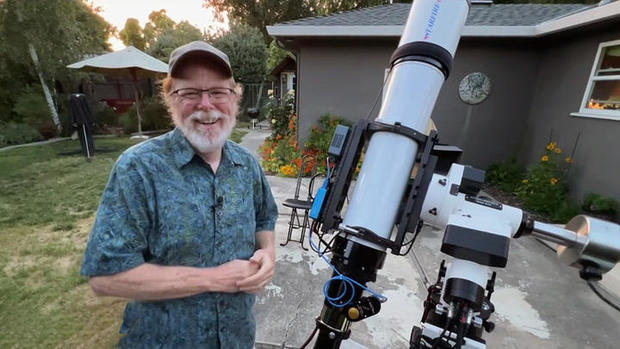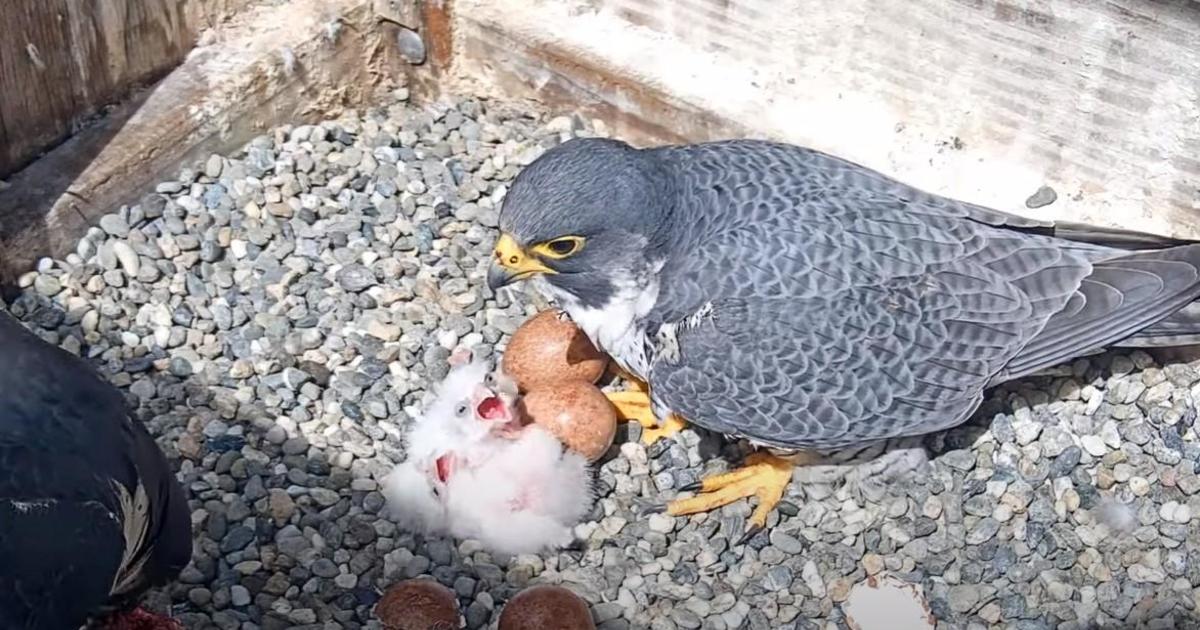Amateur astronomer unwittingly records rare supernova bursting to life
PALO ALTO -- The space world is buzzing about the most powerful explosion in the universe. A supernova has burst onto the scene in a galaxy quite literally far, far away, and an amateur astronomer on the Peninsula was watching and taking photos to capture the instant it happened.
At about the time giraffes emerged on the savannah and myrmecophaga tridactyla -- that's a prehistoric giant anteater to the layman -- began hoovering the primordial ant, an ancient alien nestled in an outer arm of the Pinwheel Galaxy knew there would be a terrific crimp in its evening. Its sun, about ten to twenty times more massive than our own, went supernova.
For twenty-one million silent years, the photons from that most massive of massive explosions shot across entire galaxies. Then, one reasonably clear night in May 2023, they tickled the electronic receptors of Jeff Crilly's backyard 6.1" refractor, causing a few pixels on his Mac laptop to blossom into pale grey light.
They pinpointed the site of the nearest stellar eruption seen in over ten years. At the time, Crilly, an amateur astronomer who lives in Palo Alto, didn't notice.
"I was looking at several galaxies. That was one of the galaxies that I was imaging for those two nights. I had the image, but I didn't bother to look," Crilly said with a shrug and a smile.
Nine hours later, supernova superstar Koichi Itagaki in Japan noted the puff of radiance and officially took credit for discovering one of the closest core-collapse supernovae found in the past several decades. The same night, Crilly heard the news and examined his Pinwheel Pics from the night before.
Sure enough, light from the supernova's nascent stage was just starting to wink on in his image. Timelapse of the dying star over the next day showed the cataclysm gathering steam.
"I wouldn't want to be a planet in that solar system right now," he said, with a wry smile for the unlucky Pinwheelians of the long ago.
Of course, this all played out millions of years ago, with news of it just arriving at Earth. The neutron bombardment would indeed have wiped out life as we know it, had such carbon-based gobblers of Chick-fil-A existed within 50 light years of The Explosion Which Knows No Bound.
We have our own nearby unstable, rambunctious, mystifying, glaring red supergiant: Betelgeuse, winking madly away in the very obvious shoulder of Orion. It's doomed to go supernova: maybe before I type "tomorrow", maybe 100,000 years from now. Oddly, intriguingly, it has suddenly increased in brightness over the past few weeks, which should lead to exactly nothing. Should.
Even if it goes, we're a safe 500 light-years away. But oh, the spectacle that would be. In the meantime, back to the cataclysm played out 21 million light years distant.
May we see this in the skies above? We may—if we have access to four things: The Big Dipper, a very dark sky, a fairly large telescope -- let's say an objective [lens/mirror] of at least six inches' aperture -- and a very friendly astronomer. We will need them to drive it and us, loaded with hot cocoa, to a distant, dark locale, and very carefully point their swell reflector to M101 high overhead in the nighttime sky.
"M101?", I hear you cry. That's how Charles Messier designated the Pinwheel Galaxy in his eighteenth-century catalog of 110 interesting astronomical objects. As it took him a while to find and catalog it -- ergo the high number -- you may imagine it's not quite gleaming like the beam from a Fresnel lens on a lonely shore.
I'm going to surrender to the excellent fellows of Sky & Telescope to point out its location, and to your own affability to hunt up a knowledgeable stargazing pal or group hauling a hefty scope. In a nutshell, M101 forms an almost-equilateral triangle with Alkaid and Mizar, the two stars comprising the end of the Dipper's handle.
Seeing the galaxy is tough enough. Spotting the extremely faint supernova within is yeoman's work—and a yeoman who eats a lot of carrots. Only four supernova have been visible to the naked eye in recorded history, and this is unlikely to be one of them—although at this writing, it's still increasing in brightness, but not visible to the naked eye. I can't quite decide between hauling out my weighty 8" Celestron -- itself in danger of collapsing under its own weight -- or binging the new season of 'Dalgliesh.'
As for Jeff Crilly, he's likely in his backyard tonight, tuning his scope to the Pinwheel, tracking the progress of the exploding star. To him, his wife, and his daughter -- who I'm crushed to report has watched me since she was a kid, and this is not exactly last month -- many thanks for their hospitality and inviting me to witness Jeff's truly stunning setup. Boy, is it impressive! Here's to more snapshots of the echo of that happily-distant apocalypse.





